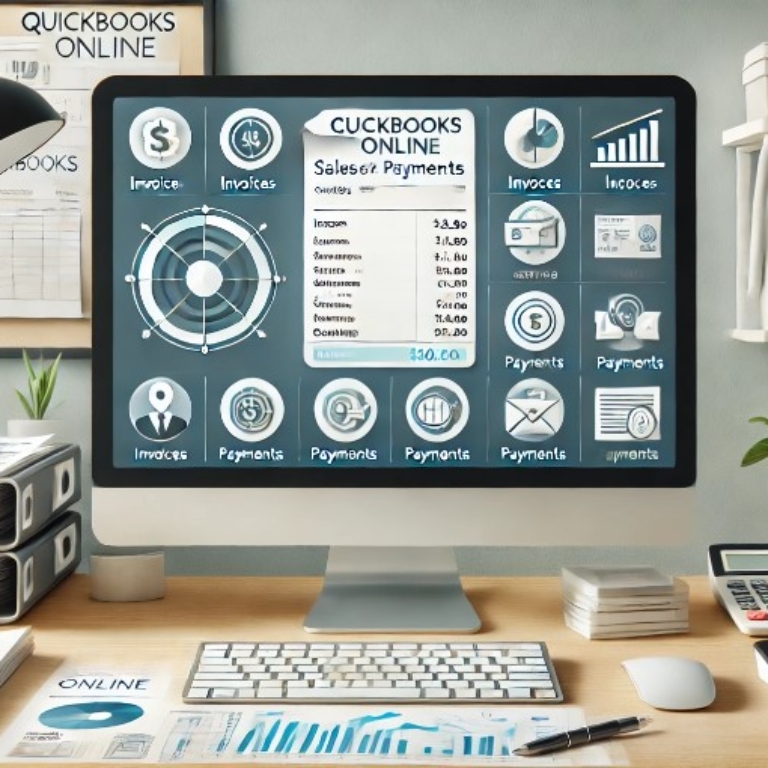Managing sales and customer transactions is essential for the money-in workflow in QuickBooks Online (QBO).
Familiarizing yourself with the essential tools and forms, such as sales receipts, invoices, and the Undeposited Funds account, will help you maintain accurate records and streamline the accounting process.
Here’s an overview of the five main tasks and some valuable tips for handling them in QBO.
1. Using Estimates
Estimates are helpful when you want to show a customer how much a product or service would cost before they decide to go ahead. In QBO, an estimate is a non-accounting transaction, meaning it doesn’t impact the general ledger or appear on financial statements.
However, it does appear in the customer’s record, allowing you to track the transaction’s progress.
Once the customer approves an estimate, you can:
- Convert the estimate to an invoice in QBO, recording it as a sale.
- Copy the details to a purchase order if you need supplies or materials from a vendor to fulfill the estimate.
2. Recording Sales with Invoices
Invoices come into play when you’re offering products or services on credit. When you complete a service or deliver a product, but the customer hasn’t paid immediately, you issue an invoice.
This document requests payment and includes terms like the amount due, the due date, and any applicable discounts.
In QBO:
- Creating an invoice immediately records it as income and generates an entry in your accounts receivable (A/R).
- When payment is received, you apply it to the invoice, reduce the A/R balance, and deposit the money into the bank account.
3. Recording Sales with Sales Receipts
A sales receipt is used when payment is made at the time of sale. Think of it like a receipt you’d get at a store. You pay immediately, and the transaction is recorded as both a sale and a payment.
In QBO:
- Sales receipts increase your income and record the deposit in the bank account in one step, making the process quick and efficient.
- Unlike invoices, sales receipts don’t require a separate payment entry since payment is recorded at the same time as the sale.
4. Receiving Payment for an Invoice
Once an invoice is issued, you’ll eventually receive payment from the customer. To record the payment, QBO provides several ways to access the Receive Payment screen:
- You can find the invoice from the Sales center and select Receive payment.
- You can also go to the customer’s profile in the Sales Center and select Receive payment next to the invoice.
- Alternatively, use the + New button and choose Receive payment.
Receiving payment for an invoice reduces your A/R balance. You apply the payment to the invoice and record it in the appropriate bank account. Keeping up with payments helps you track which customers still owe money and manage your cash flow.
5. Using the Undeposited Funds Account
Sometimes, payments from customers aren’t deposited in the bank immediately. In these cases, using the Undeposited Funds account is helpful. This account is a temporary holding space for payments until they’re deposited in your bank.
Why use it?
- It keeps track of payments that are received but not yet deposited, preventing overstatement of income.
- It allows you to group multiple payments into one deposit, which can help match what appears on your bank statement.
For instance, if you receive checks from several customers but won’t deposit them until later, you record them in Undeposited Funds.
Article: The Pitfalls of Accumulating Undeposited Funds in QuickBooks Online
Then, when you deposit the checks as one total amount, you move the payment record from Undeposited Funds to your bank account in QBO, ensuring your records match the bank.
Using QuickBooks Payments for Easier Deposits
If you use QuickBooks Payments, receiving customer payments is even simpler. This service lets you add payment links to invoices so customers can pay online via PayPal, Venmo, credit card, or ACH bank transfer. Once a payment is made, QBO:
- Records the payment automatically,
- Deposits it to the bank account, and
- Applies any transaction fees accurately.
QuickBooks Payments can reduce manual work and ensure that deposits are recorded correctly.
Recording Non-Customer Deposits
Not all deposits are customer payments. Sometimes, businesses receive money for other reasons, such as vendor refunds, tax refunds, owner contributions, or loan proceeds. These deposits should be recorded without using sales forms, as they aren’t income from sales.
To record these types of deposits:
- Use the Bank Deposit feature in QBO.
- Categorize each deposit appropriately so as not to inflate sales income on financial reports.
For example, if the business receives a tax refund, use the Bank Deposit feature to record it as a refund, ensuring it’s not mistaken for sales revenue. This way, your reports accurately reflect actual income.
Quick Recap
Understanding and correctly using QBO’s sales forms and features can greatly improve your accounting workflow.
Here are the key takeaways:
- Use Estimates to provide quotes and track potential sales.
- Record Invoices for sales on credit and use Sales Receipts when payment is received at the time of sale.
- Use the Undeposited Funds account for payments that haven’t reached the bank yet to prevent overstatement of income.
- For non-customer deposits like refunds or owner contributions, rely on the Bank Deposit feature instead of sales forms.
- QuickBooks Payments simplifies payment collection and keeps your records up-to-date automatically.

Add a Comment
You must be logged in to post a comment